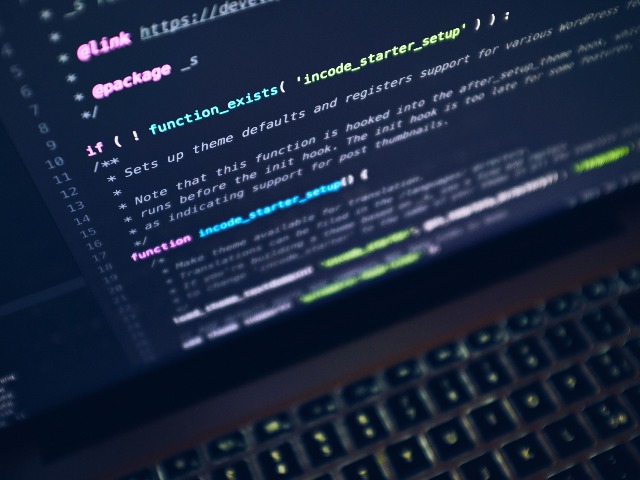What exactly is Speech Technology?
| Date: | 02 March 2022 |
| Author: | Leslie Willis |

Ever wondered how Siri understands you or how Alexa talks back? Speech Technology is all around us, yet many people don’t fully grasp how it works. In this blog post, I break it down in a simple, accessible way: explaining Speech Recognition, Speech Synthesis, and why this technology matters in everyday life. Whether you're just curious or thinking about diving into the field, this is your beginner-friendly guide to Speech Tech. Ready to unravel the mystery?
Speech Tech, Explained
Ever asked Siri for the weather, or told Alexa to play your favorite song? That’s Speech Technology at work. But have you ever wondered how it actually functions?
Every time someone asks me what I study, there’s a little pause before I start throwing out keywords like speech synthesis, Alexa, Siri, and voice recognition. Sometimes, they nod in understanding. More often, I get a pair of confused eyes staring back at me.
The standard explanation I’ve come to use is:
"Oh, Speech Technology is like a mix of Linguistics and Programming."
And yet—the staring continues.
So, with this blog post, I hope to lift the curtain a little and give you a clear idea of what Speech Technology is, how it works, and why it matters. And don’t worry—if it seems a bit complex at first, that’s normal! I’ll also include some useful resources at the end in case you want to dig deeper.

“Alexa, how old was Mozart when he got famous?” - But What More?
When people think about Speech Technology, they often picture voice assistants setting timers, answering trivia questions, or creating shopping lists. But what else can it do?
-
Read aloud newspaper articles or books for accessibility
-
Generate synthetic voices for people with speech impairments
-
Enable hands-free control while driving or cooking
-
Detect emotions or even diseases based on speech patterns
-
Help automate customer service through virtual assistants
Speech Technology has evolved a lot since the first speech synthesizers and recognizers were invented, but we’re still only scratching the surface of its potential.

Speech Synthesis vs Speech Recognition - How Do They Work?
Let’s break Speech Technology down into two key areas: Speech Recognition (how computers understand speech) and Speech Synthesis (how computers produce speech). Voice assistants like Siri and Alexa use both.
Speech Recognition: Turning Sound into Meaning
Imagine you say:
"Hey Siri, what’s the capital of Ireland?"
Siri does not actually "hear" your words the way humans do. Instead, the Speech Recognition system:
-
Breaks down your speech into small sound units (phonemes).
-
Compares them to a massive database of sounds.
-
Uses algorithms to match them to words and figure out the sentence’s meaning.
Think of it like teaching a child to recognize different types of fruit. At first, they might confuse apples with peaches, but over time, they learn to distinguish them based on features like color, shape, and texture. Speech Recognition works the same way—by recognizing patterns in sounds and linking them to meaning.
Speech Synthesis: Giving Computers a Voice
Now, let’s flip the process. Once Siri understands your request, she needs to reply—using Speech Synthesis.
How does that work?
Inside Siri’s "brain," she has a vast dictionary of recorded speech sounds. To say "Dublin," she has to:
-
Find the right phonemes to form Dublin (which in the International Phonetic Alphabet looks like [ˈdʌblɪn]).
-
Smoothly stitch them together so they sound natural.
Now, here’s a fun experiment:
Try recording yourself saying “Dublin” one sound at a time—then paste those clips together in an editing app like Audacity. Does it sound natural? Probably not! That’s because real speech isn’t just about individual sounds—it’s also about intonation, rhythm, and how sounds blend together.
This is where Machine Learning comes in. Advanced Speech Synthesis systems don’t just glue sounds together; they analyze context and predict how words should flow to sound more human-like.

Alright, Now What?
Now that you have a basic understanding of Speech Technology, where do you go from here?
If you’re curious to explore more—or even try coding some of this yourself—here are some great resources to get you started:
Online Courses
-
Speech Zone – Courses by the University of Edinburgh
YouTube Channels
-
Valerio Velardo – AI and Speech Tech Explained
-
3blue1brown – Great visual explanations of complex topics
-
Listen Lab – Speech and audio science
-
Steve Brunton – Machine Learning concepts
Learn to Code for Speech Tech
If you do decide to explore this field—have fun! Speech Technology is an exciting, ever-evolving world. Embrace the frustration when things don’t work the first time (it’s part of the process!), and keep experimenting.
About the author

I am Leslie, and I graduated from the MSc in Speech Technology at Campus Fryslân. Before I studied in Germany which also is where I am from. I’m a language enthusiast and I love music, and coffee.. and ginger beer!

